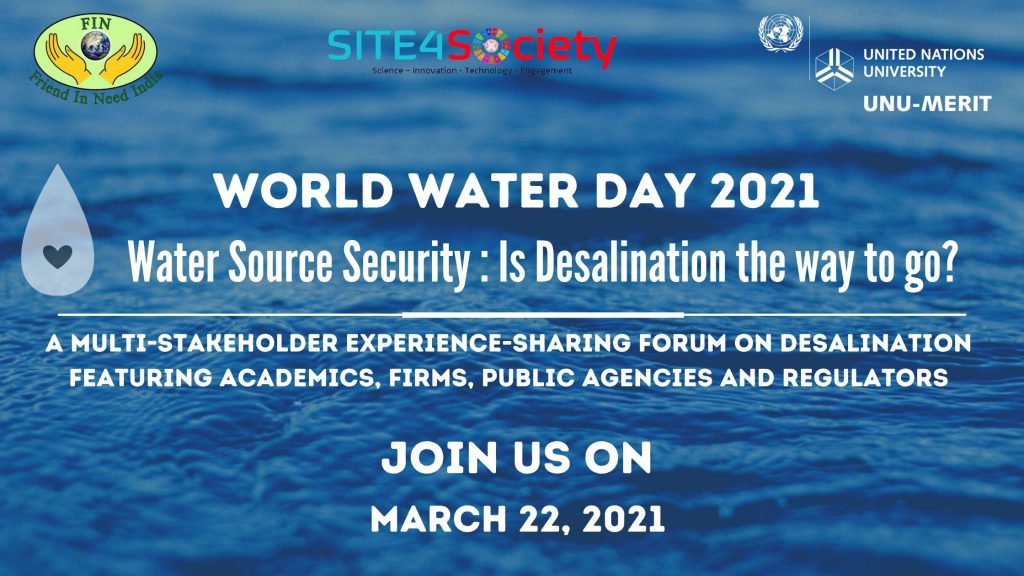
We haven’t written any blogs or academic publications on water yet. But we had organised a multi-stakeholder Forum where experts from public agencies, the academic community, social sector and businesses discussed the potential of desalination technologies. The videos can be accessed here.
Concept Note on
Water Source Security: Is Desalination the way to go?
Access to water is fundamental to human security. According to the United Nations, the human right to water can be defined as the right to sufficient, safe, acceptable, physically accessible and affordable water for personal and domestic uses. It can be extended to include water for meeting agricultural and industrial requirements. Water is required to satisfy the needs of individuals, communities and economic activities for development and growth. Data reveals that water insecurity or access to an adequate quantity and/or quality is most lacking in developing and emerging countries (see figure). Water insecurity is likely to become the principal limiting factor for sustainable development in these regions. Thus, now more than ever, it must be addressed better to achieve the 2030 Global Development Agenda.
Currently, many pathways are being explored to lower water stress. These include: i) Water Conservation (including rainwater harvesting, groundwater table replenishment), ii) Water Recycling and Reuse, and iii) “Expansion” of existing water resources. While the first two concern efficient management of existing water resources, the latter focuses on using new technologies like desalination to add to freshwater resources. Desalination seems to hold an important key to breaking the Gordian knot of water insecurity. A few countries which traditionally had limited freshwater resources became early adopters of these technologies. For instance, Singapore, Australia, UAE and Israel have incorporated desalination as a key component in their water sourcing strategy and planning.
However, their implementation and diffusion remains a considerable challenge for policy and project decision-making, in addition to being an expensive proposition and bringing in environmental concerns. Thus, it is important to take stock and understand how desalination technologies have evolved and assess whether they are still a white elephant or whether they are the golden bullets with which to eliminate water source insecurity.